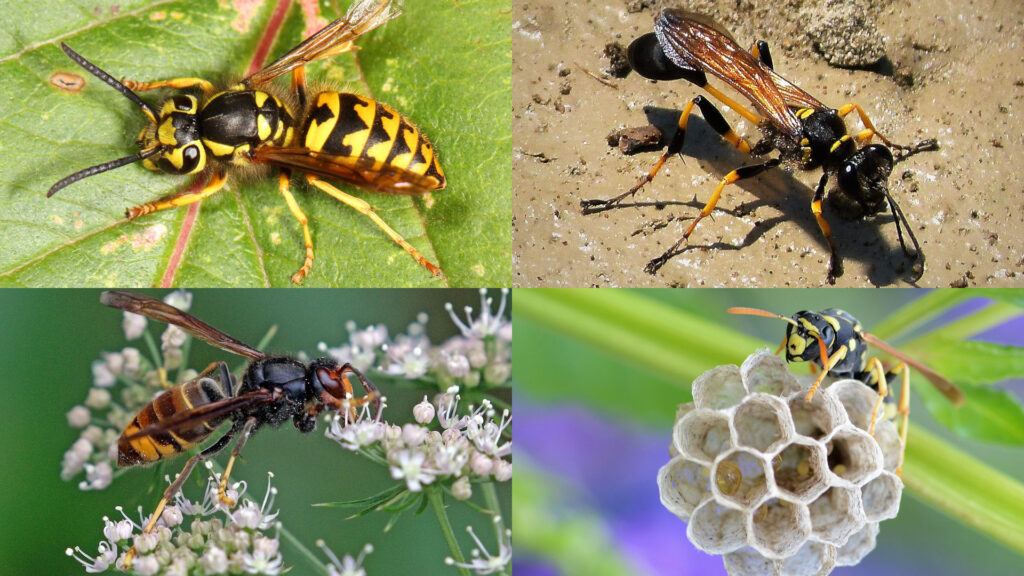
Wasps are fascinating yet potentially troublesome insects that play essential roles in the ecosystem. They are often confused with bees, but there are significant differences between these two groups of insects. Understanding these differences can help you manage your related issues effectively around your home.
Key Differences Between Wasps and Bees
Wasps typically have narrower bodies with fewer hairs, while bees possess broader bodies covered with hair for pollen collection. Furthermore, their feeding habits differ; bees nourish their young with pollen and honey, whereas wasps primarily feed their larvae on captured insects and spiders. This diet makes them vital for controlling pest populations, but it also brings them into close proximity to humans.
The Risks of Wasp Stings
Wasp stings can be quite painful and, while they are generally not life-threatening, they can lead to severe allergic reactions in some individuals. It’s essential to recognize that a sting can provoke a swift and dangerous allergic response, potentially leading to anaphylaxis. Awareness of these risks is crucial, especially since stings have been implicated in several highway accidents due to sudden distractions.
Types of Wasps
Social Wasps
Social wasps, such as hornets, yellow jackets, and umbrella wasps, are known for their colony structure. They work collaboratively to build nests and care for their young, making effective management essential to prevent infestations.
Solitary Wasps
On the other hand, solitary wasps, like mud daubers, build their nests independently. A single female constructs and maintains her nest, often making them less aggressive than their social counterparts.
Pollination
Many people may not realize that wasps play a significant role as pollinators in various ecosystems. While bees are often highlighted for their pollination efforts, wasps also contribute to the process, particularly in flowering plants. They help transfer pollen from one flower to another, facilitating the reproduction of many plant species. This interaction is crucial for maintaining biodiversity and ensuring the health of ecosystems. The U.S. Forest Service emphasizes the importance of wasps in pollination, noting that their activities support not only wildflowers but also many agricultural crops. For more information on this vital role, you can visit the U.S. Forest Service’s page on wasp pollination.
Control Strategies
Effectively managing wasps requires careful planning and execution. Here are some practical tips for controlling wasp populations:
- Timing is Crucial: Perform control measures at dusk or night when wasps are less active. Ensure you are dressed in protective clothing, including gloves and a hat.
- Avoid Provocation: Using a flashlight at night can agitate them and increase the risk of stings. If you notice a large number of them flying from the ground, they may be yellow jackets.
- Nest Identification: Mud daubers create distinctive nests under roof overhangs, typically appearing as clusters of dirt.
- Post-Infestation Clean-Up: After addressing honeybee infestations, remove wax and honey from treated areas to prevent attracting other pests.
- Effective Treatment Timing: The best time to treat yellow jackets is late afternoon or dusk when they are returning to their nests.
- Use Baited Traps: Setting baited traps in areas of wasp activity can help manage populations effectively.
Explore More
For additional information on specific types of wasps, check out our subpages:
| Wasp Type | Description | Sting Information |
|---|---|---|
| Hornet | Learn about the aggressive nature and control methods for hornets. | Hornet stings are painful and can cause allergic reactions. |
| Mud Dauber | Discover the nesting habits and characteristics of mud daubers. | Generally not aggressive; their sting is mild, but can still hurt. |
| Umbrella Wasp | Understand the umbrella wasp’s behavior and management tips. | Mildly aggressive; stings can be painful but are rarely dangerous. |
| Yellow Jacket | Find out how to identify and control yellow jackets effectively. | Known for their painful stings; can sting multiple times if provoked. |
Understanding the various types of wasps and how to control them is vital for maintaining a safe and comfortable environment. If you require professional assistance, do not hesitate to contact us for expert pest control services.
